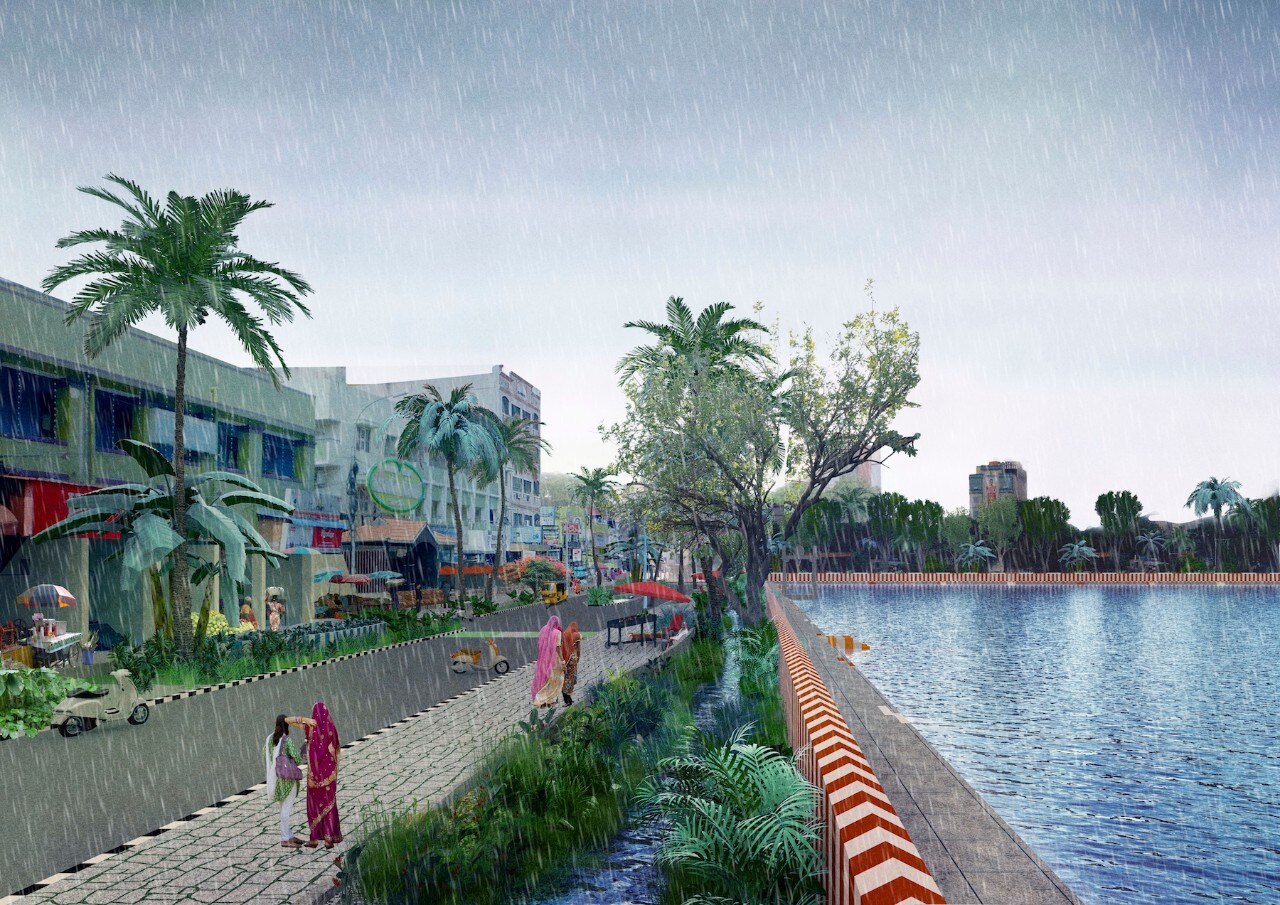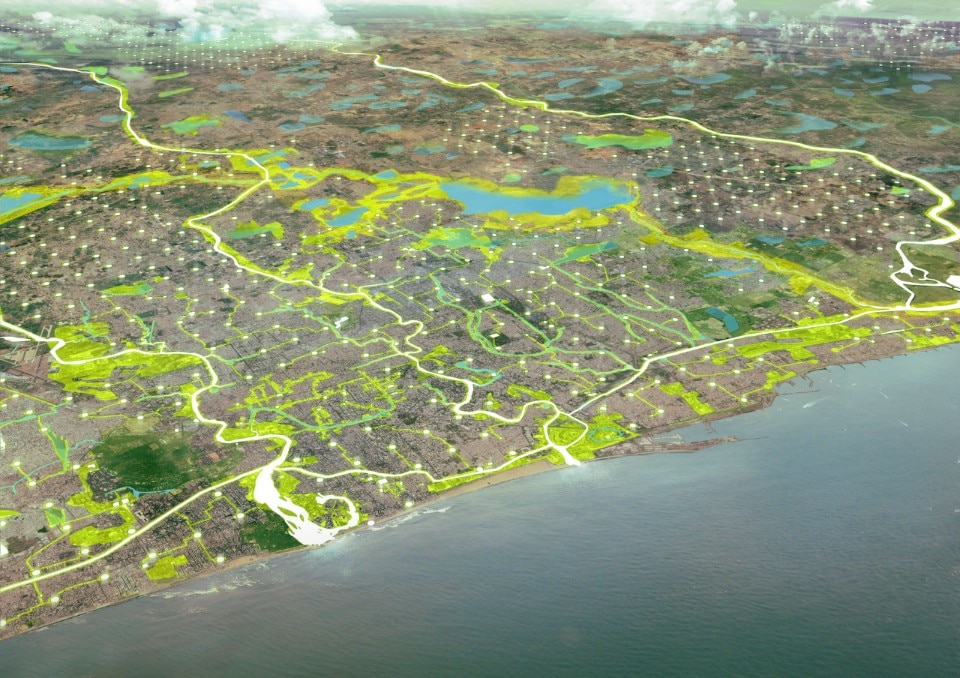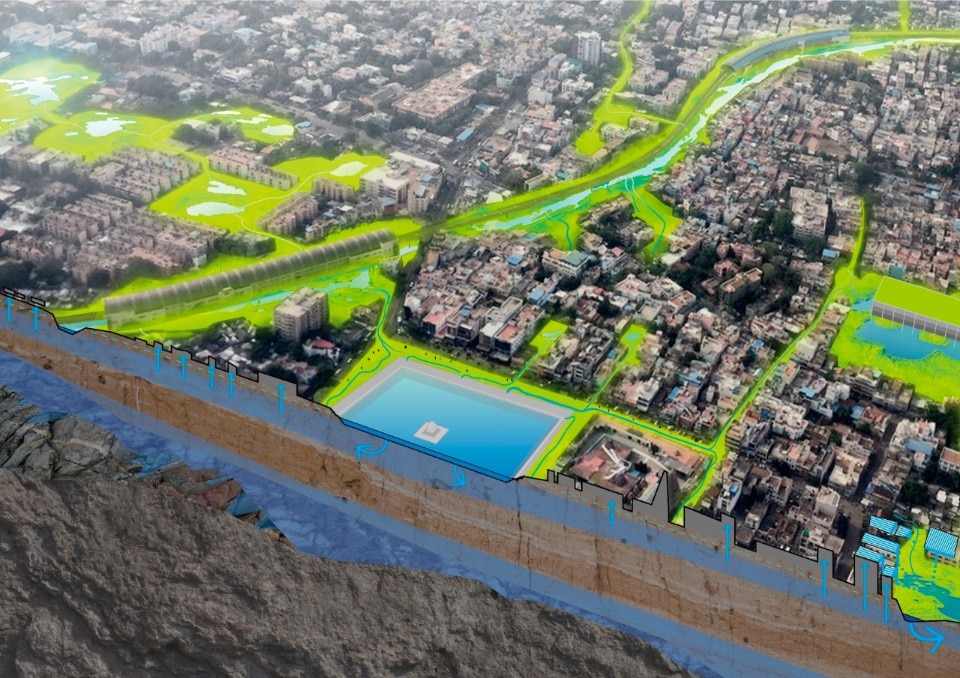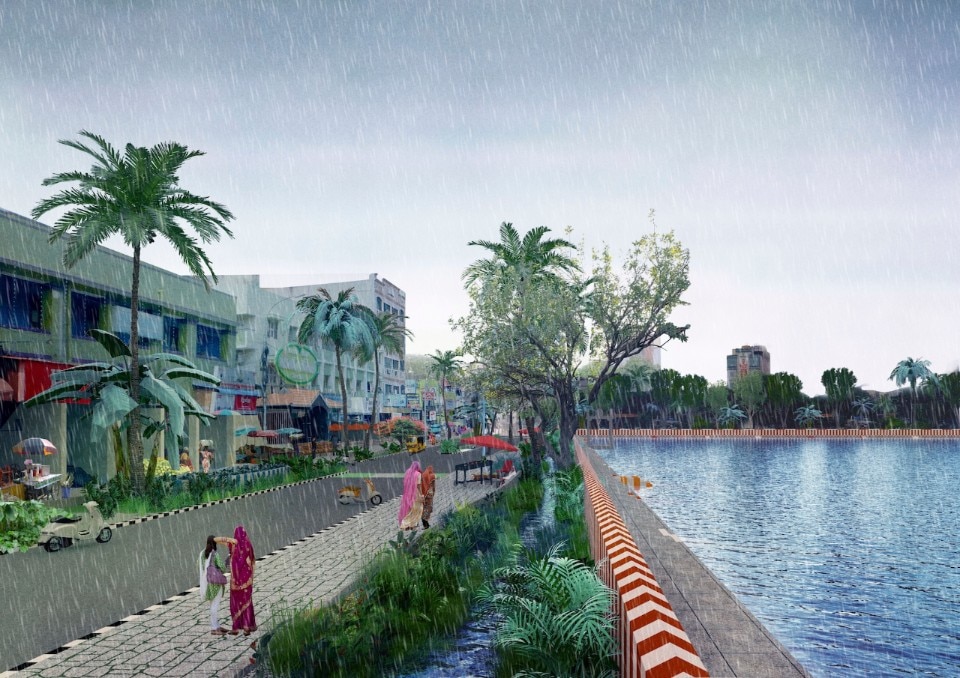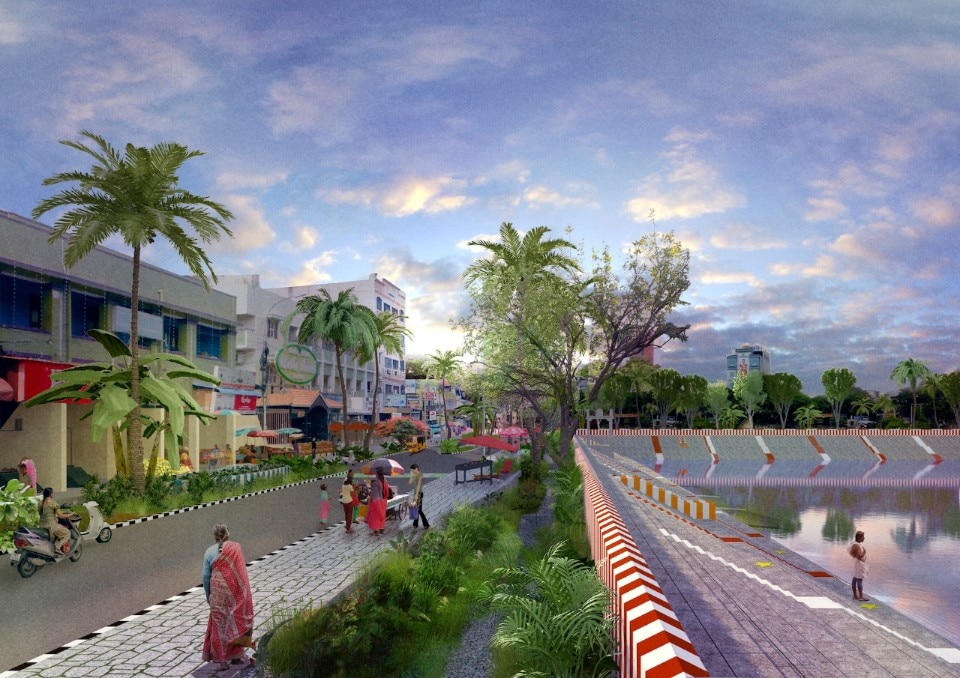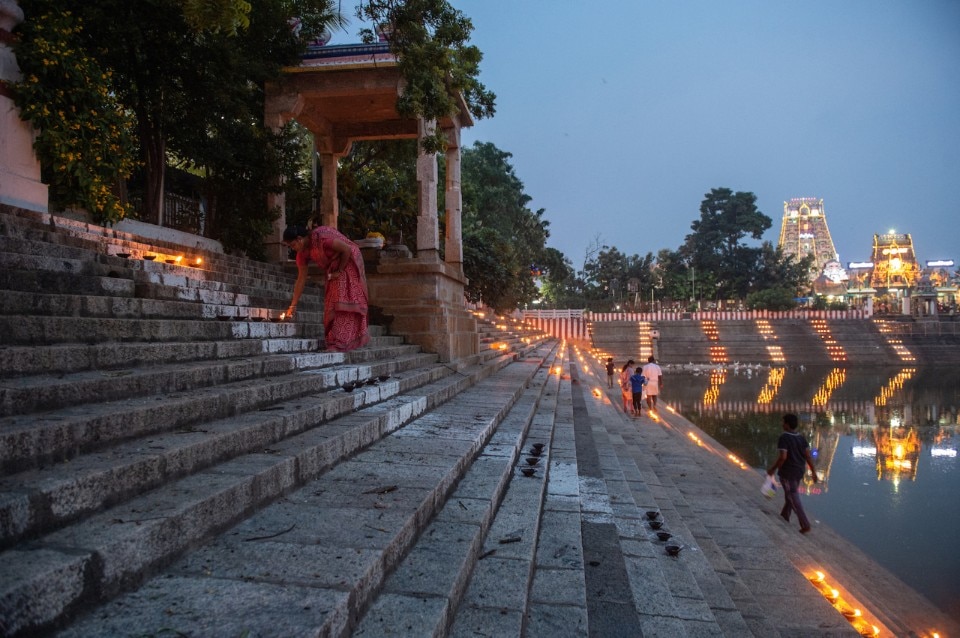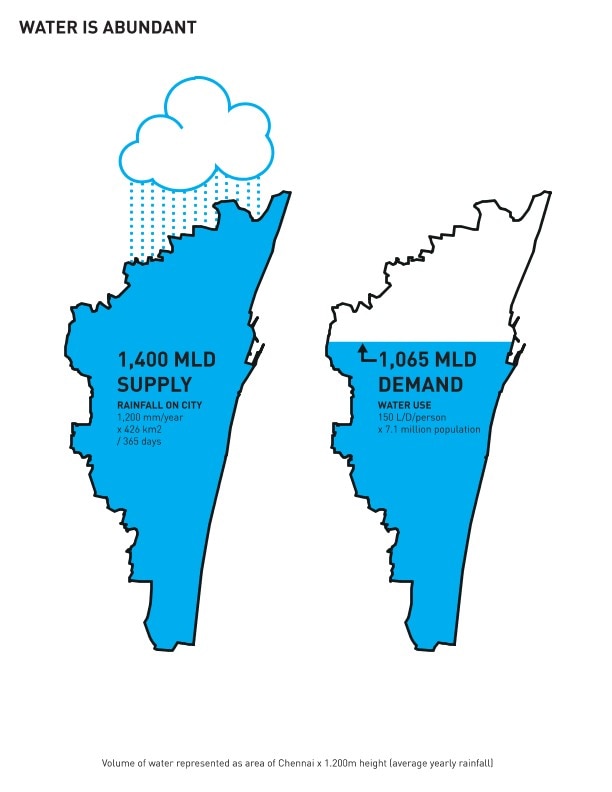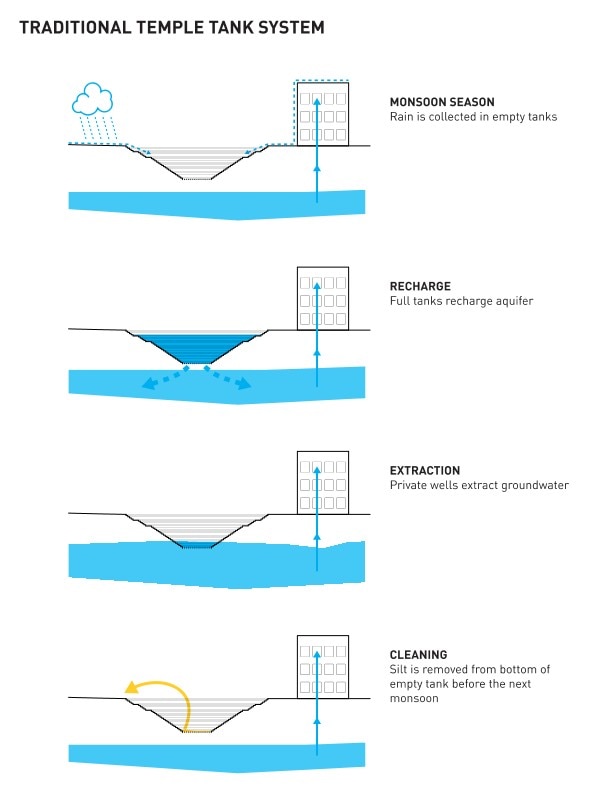This article was originally published on Domus 1043, February 2020.
Last summer the Southern Indian city of Chennai (formerly Madras) made alarming global headlines as the subcontinent’s third largest metropolis faced the catastrophic prospect of running out of water.
Rapid urbanisation and a creaking water infrastructure, along with erratic weather patterns exacerbated by climate change, were cited as critical factors contributing to the escalating crisis. A scenario only narrowly avoided – or rather averted – when rain came in July.
Chennai follows in the footsteps of Cape Town which, in 2018, was the first major city to begin a countdown to Day Zero, the day when city taps would be shut off. Now that more than half the global population lives in cities, the dry city looks likely to be a recurrent problem around the world. “A person can survive only about three to five days without water,” writes Cape Town-born activist Ashley Dawson in The Washington Post. “What about a city? This is not a hypothetical question: the thirsty city promises to be the most dire social crisis of the 21st century.”
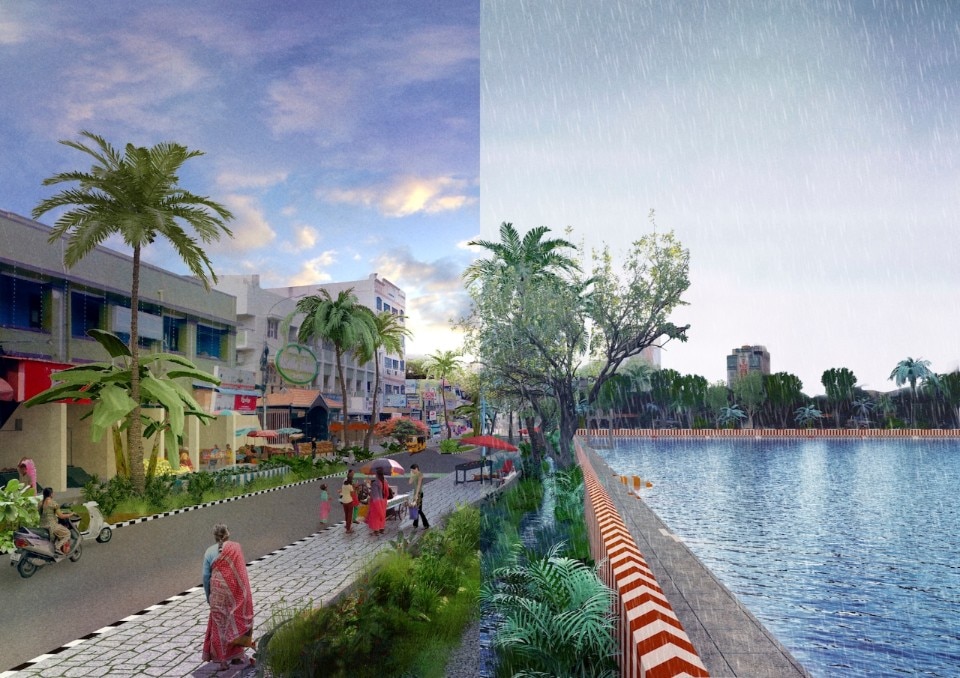
Chennai’s mounting water crisis made the city an obvious choice – along with Khulna in Bangladesh and Semarang in Indonesia – as a pilot for the Water as Leverage programme, an incubator for radically different approaches to water management initiated by the Dutch government. As we face up to a water-stressed future, it is clear that many of the ways in which water was managed in the 20th century no longer make sense, and new approaches inspired by vernacular or preindustrial methods that even a few years ago would have been considered unorthodox are being explored as possible solutions.
The first pilot in Chennai is called City of 1,000 Tanks, a project led by Eva Pfannes and Sylvain Hartenberg of Rotterdam-based Ooze Architects. Their proposal sets out to resurrect the city’s historic system of water tanks as part of a holistic solution to the problems of flooding, water scarcity and pollution. Instead of following the current paradigm of designing systems to purge the city of heavy monsoon rains, Ooze aim to link historic tanks, canals and rivers into a new green network of bio-swales, constructed wetlands and water detention ponds. This flexible urban landscape is intended to “make water feel welcome” and work in synergy with the local climate and available water resources, particularly the monsoon rains.
Despite our associations of drought with a dry climate, Chennai receives roughly the same amount of rain as the UK. However, two thirds of the surface of modern Chennai has been sealed by concrete which, exacerbated by the unregulated development of the surrounding wetlands, means that rainfall flows straight into the sea rather than soaking into the ground and recharging the aquifer. Instead of harnessing this freely available resource to supplement its dwindling groundwater supply, the city currently relies on costly desalination plants or trucking in water from afar, for those who can afford it.
This “Sponge City” approach introducing porous surfaces into the urban environment is an increasingly central tenet of sustainable urbanism, with interventions ranging from pocket parks and permeable pavements to a city-wide scale. A prominent example is the Chulalongkorn University Park in Bangkok, designed by Landprocess, that captures and holds floodwater in lawns, wetlands and ponds until it can be used.
The City of 1,000 Tanks project was exhibited as part of the Water Futures research programme that I recently curated at A/D/O in New York. Conceived in response to mounting tensions around water in the urban environment, the programme was intended as a platform for inspiring and informing imaginative design-led solutions to the water crisis.
As Dr Upmanu Lall, director of Columbia University’s Water Center, has pointed out, the Victorian-era engineering visions that became the norm for urban water infrastructures are no longer viable on either practical, economic or environmental levels. Ooze’s development of nature-based, off-grid solutions is part of a growing trend to drastically reimagine conventional urban water systems that often draw on environmentally responsive vernacular practices.
Alongside Chennai, Ooze also exhibited proposals for two other cities of equivalent size. Their first pilot for a strategy on an urban scale is Água Carioca, trialled in Rio de Janeiro as a means of providing low-cost, local water cleansing systems for informal communities that have never had centralised water infrastructure.
The New York: Every Other Street proposal – which aimed to address the problem of storm-water run-off polluting natural waterways – similarly reintroduces nature as a means of holding water to avoid overburdening the combined sewage system, at the same time creating an attractive green network. According to Ooze partner Sylvain Hartenberg, “By bringing New York and New Yorkers a little closer to nature through the redesign of their streets, we have the power to prevent pollution, and impart an improved lifestyle all at once. It’s just about listening to what nature wants.” Large-scale modern infrastructure is often invisible, incomprehensible and vulnerable to failure under increasing pressure. Ooze believe that hiding the indispensable systems that we rely on – such as water, climate or energy – prevents us from understanding the impact we have on the world around us. Although their scheme for Chennai is intended to ease the pressure on existing infrastructure rather than replace it, the work strives to reintroduce the cyclical processes of nature and changing water seasons into everyday life, making them both visible and tangible.
A person can survive only about three to five days without water. What about a city?
In addition to their vital function of containing floodwaters and providing an opportunity for them to soak through to the aquifer, Chennai’s magnificent tanks were designed to celebrate water in urban life, much like the aqueducts in ancient Rome or the elaborate system of cisterns and pipes that enabled the Nabataean city of Petra to become a garden city in the desert. There is renewed interest in ancient and vernacular water systems. In her book Steps to Water: The Ancient Stepwells of India (2002), Professor Morna Livingston charts the changing community, spiritual and water provision functions of stepwells in Western India since the earliest prototypical forms were built around 200 CE. Often decommissioned under British rule, there is now a move to restore these tanks to use in Gujarat and Rajasthan.
City of 1,000 Tanks has been developed as an iterative project that can expand across the city and be replicated elsewhere. A field trial is underway at PS Senior School in Mylapore, a historic centre of Chennai, that as well as demonstrating the effectiveness of natural systems is conceived to educate students and local residents. The next step is an initiative that will restore 2 of Mylapore’s 53 historic temple tanks and weave a network of bio-swales through the connecting public space, establishing the beginnings of a city-wide water management scheme as well as creating a new tourist attraction. This is intended as the first of four projects adapted to different urban environments in Chennai, including disaster-resilient housing in the Chitra Nagar area and a smart waterways programme for Mambalam.
This project is evidence of a new approach to solving water issues that would until recently have been considered fringe. Now there is a growing realisation that we should work with nature, rather than against it. Addressing these issues holistically and at a human and local scale has the added advantage of making the urban environment more pleasant and liveable. Democritus may have been prescient when he said that “truth lies at the bottom of a well”.
Jane Withers is a prominent design curator, consultant and writer. She led the year-long Water Futures research programme at A/D/O New York, and has extensive experience engaging creatively with issues surrounding water sustainability.


